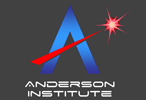Viewed Effects of Faster-than-Light Motion
| Local FTL and observed pair-production --
Viewed effects of FTL motion, assuming the constancy of
light-transmission relative to the observer Let's suppose that a particle approaches you at a speed greater than that of light. If we assume that you are standing in a field of corn, and the particle destroys everything in its path, then you'll be able to see the effects of the particle's motion, (a burning pathway cut through the otherwise featureless cornfield), even if you can't see that particle itself. Now, let's assume that the speed of light-transmission is constant relative to you (as SR says it is), and that the path of the particle takes it right past where you are standing. What do you see? Well, the first thing that you'll see is a burning opening in the corn right by you, because the FTL particle will have been traveling faster than its own signal, and will reach your position before you can see any evidence of its earlier destruction as it approached (these signals don't start turning up after the particle has already passed you). Recession If you happen to be looking in the right direction, you'll see the opening progress in the direction of the particle's travel, but because of the lengthening timelag, the particle appears to be going at less then the speed of light. If there is a marker 1 lightsecond away, and the trench is cut between you and it in near-instantaneous time, there's still going to be a one-second timelag between the trench being seen to open at your feet and being seen to reach the marker point, because that's how long it takes the signal to get back. Result: a receding FTL object looks as if it is going at less then lightspeed, no matter how fast it's really going. Approach However, there's another effect. As the trench recedes away from you, the light-images from the earlier destruction are now beginning to reach you. One microsecond after the particle reaches you, you see the closest 300m of its earlier destruction. After another microsecond, you can see 600m of burning trench stretching away from you in the direction the particle came from. After an additional microsecond, you can see the "old" damage that occurred 900m away. The "damage-front" for the approach phase appears to be receding rather than approaching. So, while the view in one direction is of the particle traveling in the correct direction at less than c, the view in the opposite direction is also of damage done by a receding particle, this one with reversed timeflow (a combination of observer constant-lightspeed and FTL approach is enough to create the appearance of a particle traveling backwards in time, although this isn't a physical effect). If you videoed the whole scene with a fish-eyed lens on your video camera, or using a mirror so that you could watch the scene in two directions, then when you replayed the tape, you wouldn't see a single trench being cut from one side of the field to the other, but instead, two trenches starting at the same point and opening out in opposite directions. Instead of seeing what looks like a single particle traveling at more than lightspeed, you'd see what seemed to be the effects of two particles emerging out of thin air, and flying off in opposite directions, one moving forwards in time and one moving backwards! "Deduced" behavior "Observed" behavior This sounds suspiciously like what quantum mechanics tells us is seen to happen - particle/antiparticle pairs are supposed to pop out of thin air without an initial cause, as a purely statistical effect. However, if you inhabited a region containing particles travelling at FTL, this is actually the sort of behavior that you might see, not because of any magical QM effects or time-travel, but simply as an artifact of the assumed constant-propagation timelag on signals. This does appear to be more than a little like Hawking radiation, but to do a proper examination of the similarities, we have to look at how the effect occurs in the presence of a gravitational gradient. Notes Although this example produced observed time-reversal, it doesn't introduce causality-violations - the effects are legal and paradox-free. We can easily recreate the effect using current equipment. Let's suppose that the swathe being cut through out cornfield wasn't being cut by a particle moving at more than c, but was being burnt into the scenery by an errant space-based laser platform designed as part of an anti-missile defense system. There's no limit to the speed at which a spot of light can be swept over a surface by a distant projector, so if the satellite decided to burn a line across the cornfield by sweeping a beam across it at >300,000km/s, then an observer standing in the middle of the field would again see two spots of light cutting into the corn, travelling in opposite directions. If the shape cut by the laser was a barcode representing a series of numbers coming from an atomic clock onboard the satellite, the ground-based observer in the centre of the field would see two sets of numbers being written in opposite directions, one counting up, and one counting down (they might think that there were two satellites up there, one of which had an atomic clock that was running backwards). Observed time-reversal isn't, in itself, necessarily a problem. The paradoxes arise when you try to deal with the Lorentz redshift as being an effect that is totally separate to the propagation stuff, or when you try to deal with objects passing through their own wavefronts "from behind". |

